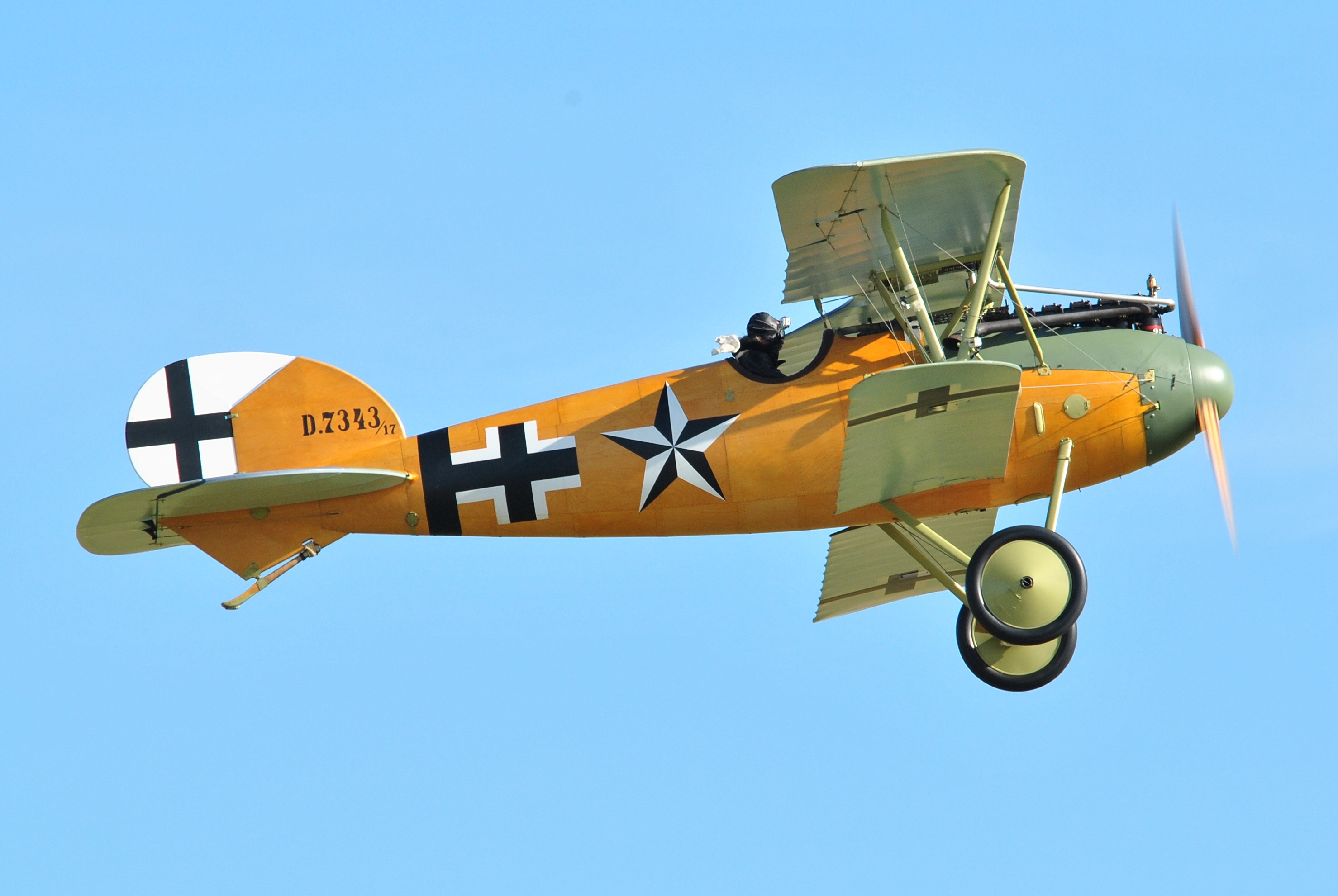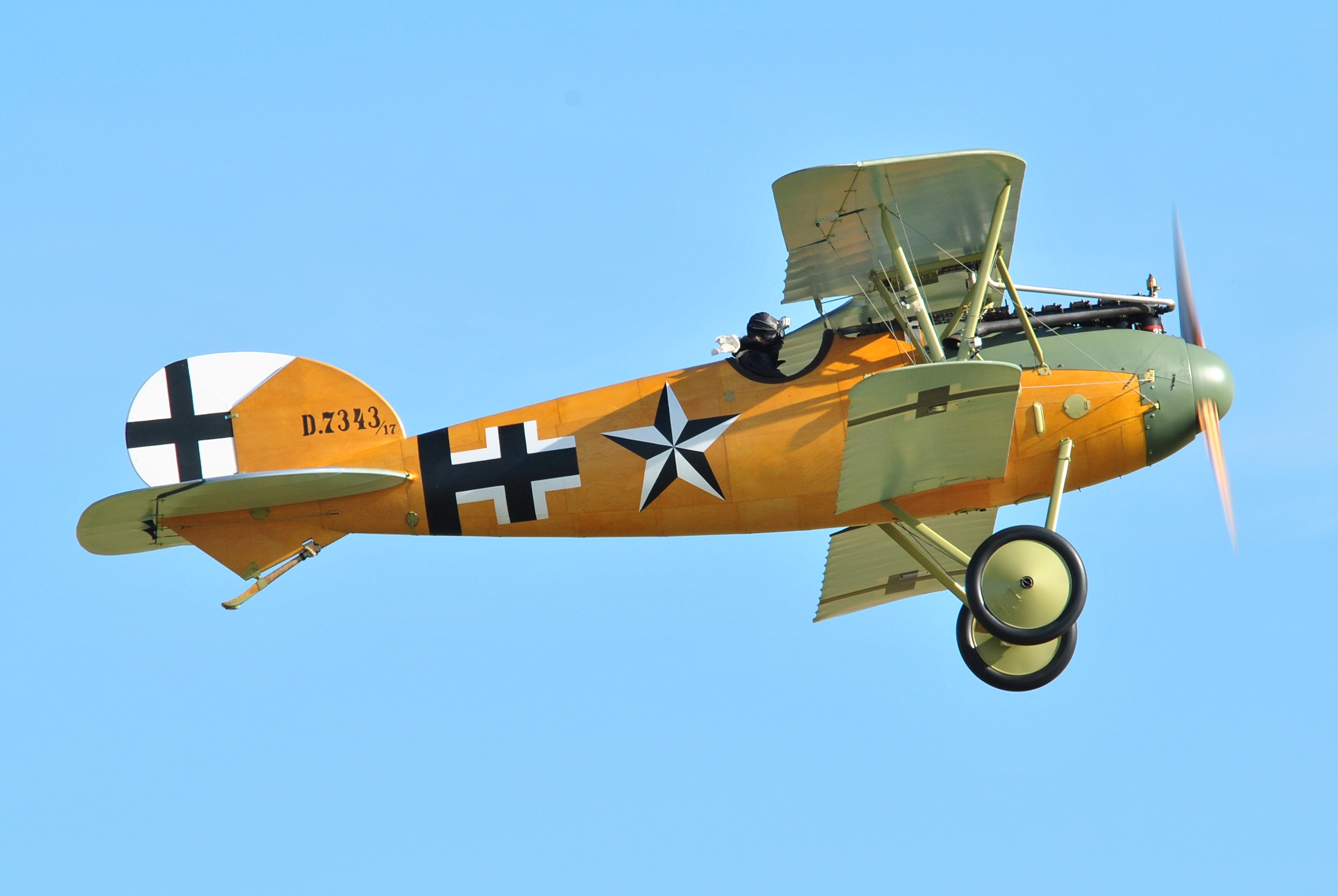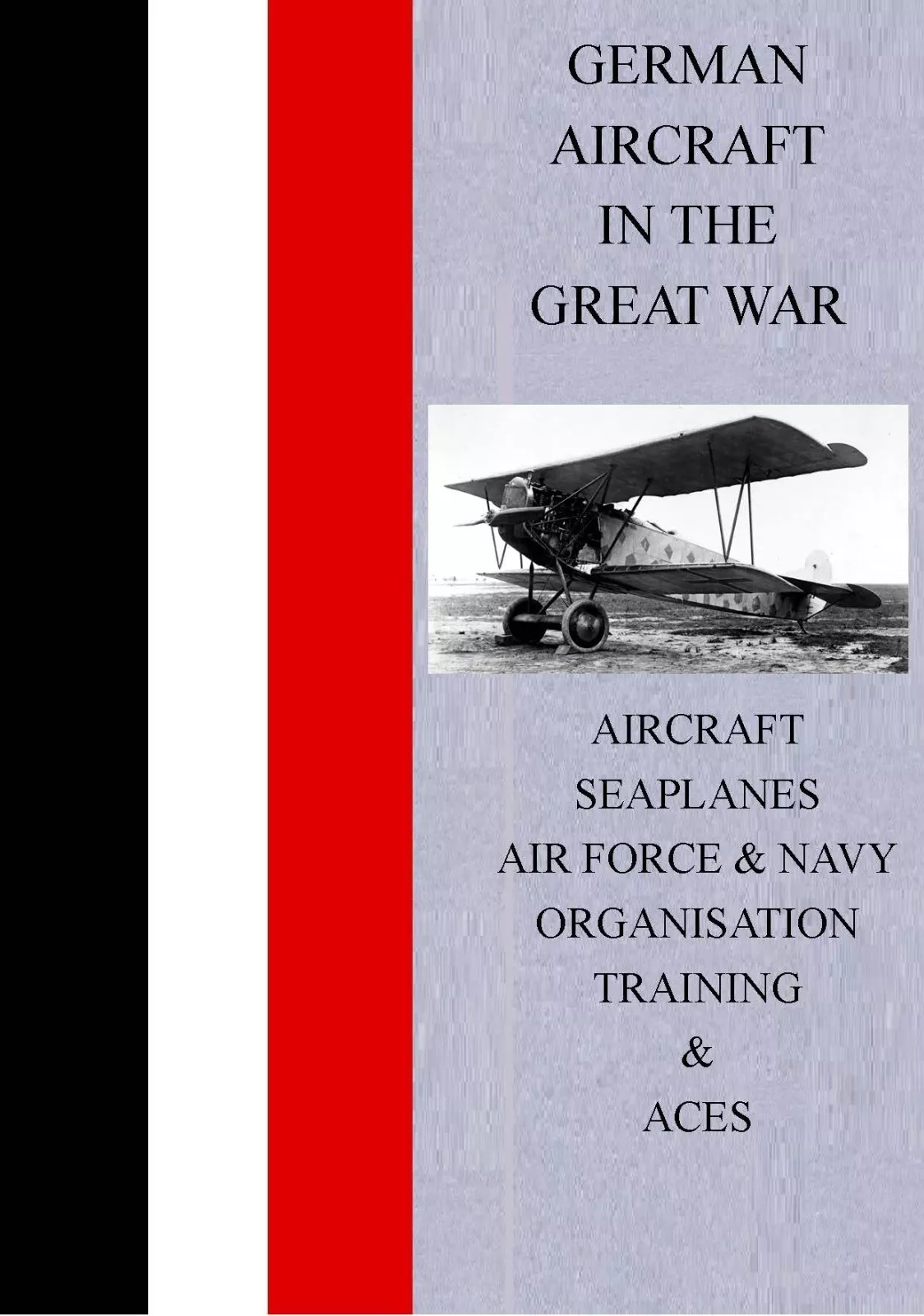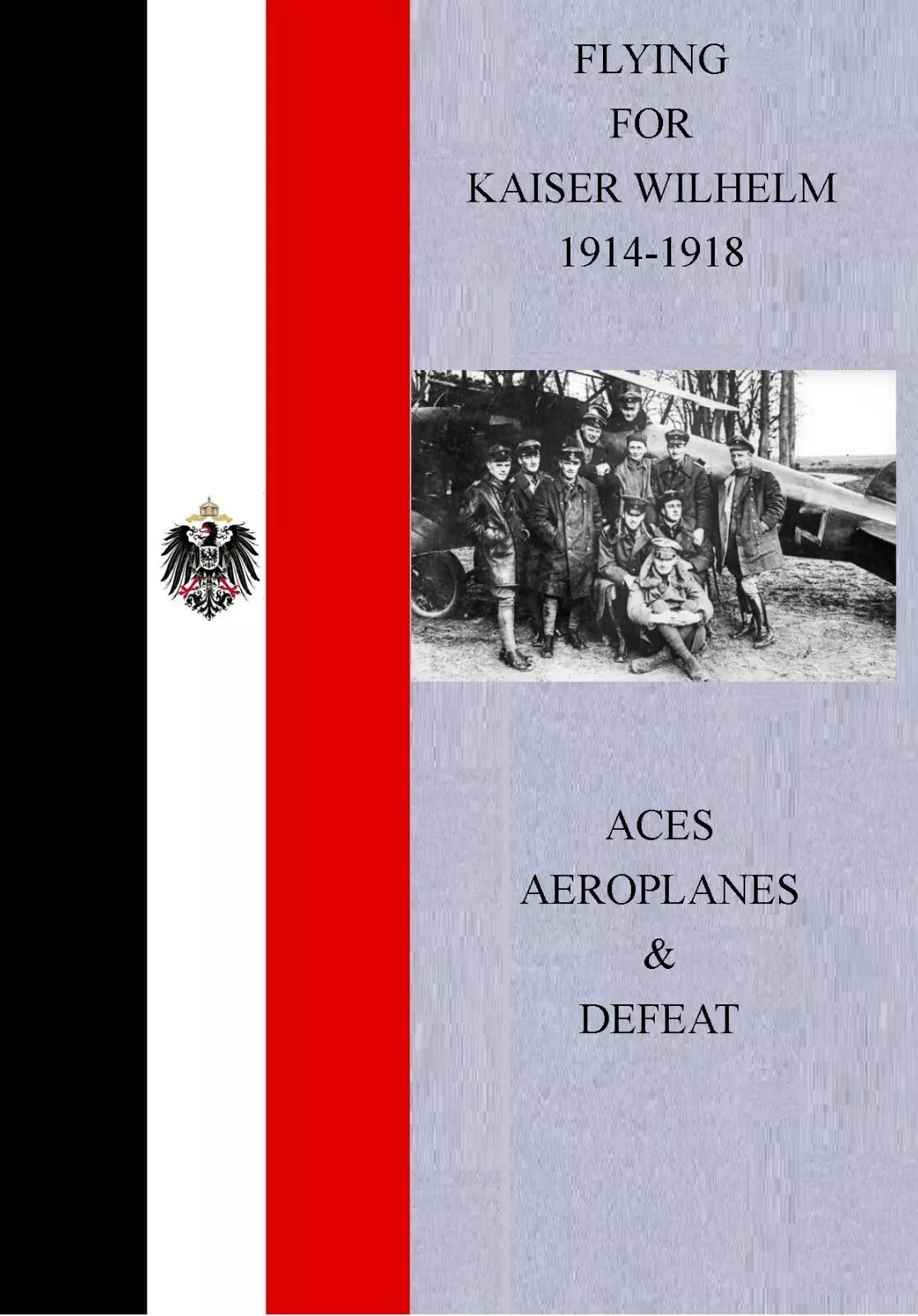Late-war Albatros refinement.
Introduction: The Albatros D.Va in Historical Context
The Albatros D.Va, a refinement of the D.III line, entered service as Allied fighters improved rapidly. Its semi-monocoque plywood fuselage delivered stiffness and aerodynamic cleanliness, while sesquiplane wings sought lift with reduced drag. Strength issues in lower wings and control harmony defined both its limits and its handling signature. This comprehensive analysis explores the D.Va's development, engineering features, operational deployment, and lasting influence on fighter design. Based on extensive archival research documented in Charles E. MacKay's authoritative work German Aircraft in the Great War 1914-1918, this article presents the complete story of Germany's late-war Albatros fighter and its role in the evolution of aerial combat.

Development Context: The Albatros Evolution
The book German Aircraft in the Great War provides comprehensive coverage of German aviation development from early experiments to advanced fighters. The Albatros D.Va emerged during a period when German aviation was undergoing rapid transformation. Commencing with early German aviation to the opening of Johannisthal airfield in 1909 and the growth of Anthony Fokker and his aircraft, German aviation progressed from pre-war experimentation to a tightly integrated system of design, production, and operational doctrine.
The Albatros D.Va represented the culmination of the D-series development, which began with the D.I and progressed through successive refinements. Each variant incorporated lessons learned from operational experience, with design changes addressing structural issues, performance limitations, and operational requirements. The D.Va's development occurred during a period of intense competition, as Allied aircraft designs improved rapidly and German designers sought to maintain technological advantage.
The book documents the German aircraft industry's growth during the Great War. In August 1914 there were 12 German aircraft companies manufacturing aeroplanes. By 1918 there were 33 aircraft manufacturers and the companies employed 60,000 workers. At the time of the Armistice the German aircraft industry had manufactured in total between 48,000 and 49,000 aeroplanes. This industrial expansion enabled the production of sophisticated aircraft like the Albatros D.Va while maintaining quality standards necessary for operational effectiveness.
The Idflieg (Inspectorate of Flying Troops) played a crucial role in German aircraft development, providing technical oversight and ensuring designs met operational requirements. The organization reports and captured aircraft evaluations provide valuable insights into the D.Va's development and operational characteristics. These documents reveal the systematic approach to aircraft development that characterized German aviation during the Great War.
Structure and Aerodynamics: Engineering Excellence and Limitations
The fuselage's plywood shell contributed to torsional stiffness, enabling a streamlined cross-section. The semi-monocoque construction technique represented a significant advance in aircraft structural design, providing high strength-to-weight ratios while maintaining aerodynamic cleanliness. This construction method enabled Albatros to produce fuselages with smooth external surfaces that reduced drag and improved performance.
The sesquiplane layout—smaller lower wing—reduced interference drag but left the lower wing prone to bending and torsional loads, prompting operational cautions in high-speed dives. The structural challenges associated with the sesquiplane configuration illustrate the engineering trade-offs inherent in aircraft design. Designers balanced aerodynamic efficiency against structural requirements, with the D.Va's configuration representing one approach to achieving optimal performance.
A single-bay bracing scheme saved weight; balancing lift distribution and structural margins became a persistent theme. The wing bracing design reflected careful consideration of structural requirements and weight constraints. The single-bay configuration reduced structural weight while maintaining necessary strength, demonstrating Albatros's engineering capability in optimizing design parameters.
The plywood construction techniques developed for the D.Va influenced subsequent aircraft designs. Carefully selected spruce, ash, and birch plywood, bonded with casein or emerging synthetic adhesives, produced shells capable of handling flight loads while streamlining manufacturing. These construction methods demonstrated the high ceiling of wood construction in aircraft design, providing lessons that would influence inter-war and wartime aircraft development.
Museum restorations reveal joinery, plywood layup, and hardware selection—keys to the type's character. The detailed documentation of restoration work provides insights into construction techniques and material choices that characterized German aircraft manufacturing during the Great War. These restoration efforts preserve crucial historical information and enable modern understanding of early aviation manufacturing methods.

Powerplant and Armament: Mercedes Power and Spandau Firepower
Typically powered by the Mercedes D.IIIaü inline-six, the D.Va carried twin synchronized Spandau LMG 08/15 machine guns. The Mercedes engine family represented a significant achievement in German aero-engine development, providing reliable power with altitude performance capabilities. The D.IIIaü variant incorporated improvements addressing altitude performance and reliability, enabling the D.Va to operate effectively at higher altitudes where tactical advantage often resided.
The engine's altitude performance and cooling solutions evolved incrementally; radiator and plumbing arrangements aimed to minimise drag while preserving reliability in combat conditions. Engine cooling represented a crucial design challenge, with radiator placement and airflow management directly affecting aircraft performance. The D.Va's cooling system design reflected careful engineering to balance cooling effectiveness with aerodynamic drag.
The twin synchronized Spandau machine guns provided effective firepower, with synchronization gear enabling forward-firing armament without propeller interference. The synchronization system represented a crucial technical achievement, enabling concentrated firepower while maintaining engine reliability. The book mentions that the evolution of the machine gun interrupter gear and the influence of Roland Garros lays aside the myth of Anthony Fokker inventing the interrupter apparatus, providing accurate historical context for this crucial development.
Armament reliability and effectiveness were crucial factors in combat success. The Spandau LMG 08/15 machine guns represented refined weapons specifically developed for aircraft use, with features addressing the unique requirements of aerial combat. The synchronization system's reliability enabled pilots to engage targets confidently, knowing that weapon failures would not compromise engine operation.
Powerplant integration addressed altitude performance requirements, with engine tuning and carburetor adjustments enabling effective operation at various altitudes. The D.Va's powerplant represented the culmination of Mercedes engine development during the Great War, incorporating lessons learned from operational experience and addressing performance limitations identified in earlier variants.

Frontline Service and Tactics: Combat Employment 1917-1918
Entering service in 1917, the D.Va faced improving Allied types such as the SE5a and SPAD XIII. German pilots exploited its steady gun platform and good forward visibility. Tactics emphasised altitude advantage, surprise dives within structural limits, and teamwork. The book provides detailed coverage of German squadron organization and deployment, with orders of battle of the German squadron in the field on the Western Front documenting the D.Va's operational context.
The Jagdstaffeln (fighter squadrons) organization concentrated talent, mentorship, and maintenance capability. Leaders such as Boelcke systematized combat rules—height advantage, mutual support, focus fire, disengagement discipline— while Richthofen enforced unit standards and aircraft readiness. The book includes accurate accounts of German aces including the loss of Manfred von Richthofen with his autopsy report, proving Brown did not shoot him down. The other aces Oswald Boelcke and Max Immelmann are described with new information, providing context for understanding the D.Va's operational employment.
Training methods for observers, mechanics and pilots are comprehensively documented in the book, with lists of training air bases, aircraft companies, spares production and military flying schools. This training infrastructure enabled effective D.Va operations, ensuring pilots possessed the skills necessary to exploit the aircraft's capabilities while understanding its limitations.
Operational tactics evolved to address the D.Va's characteristics and limitations. The aircraft's stable gun platform and good forward visibility enabled effective gunnery, while its structural limitations required careful attention to dive speeds and maneuvering loads. These operational considerations informed tactical employment, with pilots developing techniques that maximized the aircraft's strengths while respecting its structural constraints.
As Fokker's D.VII emerged, the Albatros soldiered on in secondary roles and as a transition trainer. The D.VII's superior performance characteristics relegated the D.Va to supporting roles, demonstrating the rapid pace of aircraft development during the Great War. The book includes special mention of the Fokker D.VII and its fate, providing context for understanding the D.Va's place in the evolution of German fighter aircraft.
The D.Va's service extended beyond front-line combat to training and secondary roles. The emphasis on training squadrons and depots documented in the book demonstrates the importance of these units in maintaining operational capability. The D.Va's service in training roles enabled new pilots to gain experience on sophisticated aircraft before transitioning to more advanced types like the D.VII.

Comparison with Contemporary Fighters
The D.Va's operational effectiveness must be understood in comparison with contemporary Allied fighters. The SE5a and SPAD XIII represented significant advances in Allied fighter design, with performance characteristics that challenged German fighters. The D.Va's semi-monocoque construction and aerodynamic refinement provided advantages in some areas, while structural limitations constrained performance in others.
Comparison with British aircraft provides insights into design philosophy differences. For comprehensive coverage of British aircraft during this period, see British Aircraft of the Great War, which includes detailed information on aircraft development and operational employment. The contrast between German semi-monocoque designs and British approaches illustrates different paths to achieving fighter performance objectives.
The D.Va's relationship with the Sopwith Camel illustrates the competitive environment of late-war fighter development. The Camel's maneuverability and armament effectiveness challenged German fighters, requiring tactical adaptations and design improvements. Understanding these comparisons illuminates the D.Va's place within the broader context of Great War fighter development.
The evolution of fighter tactics reflected aircraft capabilities and limitations. German pilots developed techniques that exploited the D.Va's strengths while avoiding situations that exposed its weaknesses. These tactical developments informed subsequent fighter design and operational doctrine, demonstrating the interaction between aircraft design and operational employment.
Performance comparison reveals the D.Va's competitive position during its operational period. While not possessing the ultimate performance of later designs like the Fokker D.VII, the D.Va provided effective service during a crucial period in the Great War. Its operational success demonstrated the importance of factors beyond raw performance, including reliability, maintainability, and tactical employment.
Structural Issues and Remedial Measures
The D.Va's lower wing structural issues represented a significant design challenge. The sesquiplane configuration's structural characteristics required careful attention to load distribution and structural margins. Operational experience revealed limitations that prompted design modifications and operational cautions.
Structural reinforcement efforts addressed identified weaknesses while maintaining performance characteristics. The iterative design process incorporated frontline feedback into factory fixes, with revised acceptance procedures and updated pilot notes reflecting lessons learned. This development cycle demonstrates German industry's capacity to respond quickly to operational requirements, though structural limitations ultimately constrained the D.Va's operational effectiveness.
Operational cautions regarding dive speeds and maneuvering loads reflected understanding of structural limitations. These cautions informed pilot training and operational procedures, ensuring that aircraft were employed within structural limits. The relationship between structural characteristics and operational employment illustrates the importance of understanding aircraft limitations in effective operational use.
Field modifications addressed some structural issues, with units developing solutions to identified problems. These modifications reflected practical engineering approaches to operational challenges, demonstrating the adaptability of operational units and maintenance personnel. However, fundamental structural limitations required design-level solutions that exceeded field modification capabilities.
The structural issues identified in the D.Va informed subsequent aircraft design. Lessons learned from the sesquiplane configuration's structural challenges influenced design choices in later aircraft, with designers moving toward more robust structural arrangements. This evolution demonstrates how operational experience informed aircraft development, creating a feedback loop between design and operations.
Manufacturing and Production
The book documents the German aircraft industry's comprehensive organization, with descriptions of the German aircraft industry, spares supply and the aftermath of the Armistice including the Amerika Programme and the Hindenburg plan. Includes all the aviation firms and their designations, providing insights into the industrial context that enabled D.Va production.
Production processes incorporated quality control systems and standardized manufacturing techniques. The semi-monocoque construction required precision jigs and manufacturing fixtures, ensuring consistent production quality. These manufacturing methods reflected German industrial capability and attention to production standards necessary for operational effectiveness.
Spares supply and logistics supported operational availability. The comprehensive documentation of spares production and supply systems demonstrates the importance of logistics in maintaining operational capability. Effective spare parts provisioning enabled operational units to maintain aircraft availability despite combat damage and operational wear.
Material availability and substitution policies addressed resource constraints during the Great War. Blockade pressure stressed materials, fuels, and lubricants, requiring adaptation and substitution where possible. These constraints influenced production processes and material choices, demonstrating the impact of strategic factors on aircraft manufacturing and operational capability.
Quality assurance systems ensured that production aircraft met specification requirements. Inspection procedures and acceptance testing maintained production quality while enabling production rates necessary to meet operational demands. These systems reflected the industrial sophistication necessary to produce sophisticated aircraft like the D.Va in quantity while maintaining quality standards.

Maintenance, Field Operations, and Support
Field maintenance balanced scheduled inspections with battlefield improvisation. Maintenance procedures addressed operational requirements while accommodating resource constraints and operational conditions. The D.Va's design incorporated features facilitating field maintenance, including accessible components and standardized fittings.
Maintenance personnel developed expertise in D.Va systems and structural characteristics. Training methods for mechanics are documented in the book, with emphasis on technical skills necessary for effective aircraft support. These training programmes ensured that maintenance personnel possessed the knowledge and skills necessary to maintain operational capability.
Spare parts availability and supply chain management addressed operational maintenance requirements. The documentation of spares production and supply systems demonstrates the importance of logistics in maintaining operational effectiveness. Effective spare parts provisioning enabled operational units to repair aircraft quickly and return them to service.
Field modifications addressed operational requirements and identified limitations. Units developed solutions to specific challenges, adapting aircraft to meet operational needs. These modifications reflected practical engineering approaches and demonstrated the adaptability of operational units and maintenance personnel.
Operational availability depended on effective maintenance and support systems. The D.Va's maintainability characteristics influenced operational effectiveness, with maintenance-friendly design features enabling operational units to maintain aircraft availability despite operational demands and resource constraints.
Legacy and Historical Assessment
The D.Va's engineering trade-offs—stiff fuselage, delicate lower wing—illustrate the compression of innovation cycles in late-war aviation. Its semi-monocoque approach influenced later wood-fuselage craft; its limitations helped steer designers toward more robust biplane geometries and, eventually, cantilever monoplanes. The book documents the aftermath of the Armistice, including the Amerika Programme and the Hindenburg plan, providing context for understanding the D.Va's place in aviation history.
The comprehensive documentation provided in Charles E. MacKay's German Aircraft in the Great War book, with 256 pages and over 200 images, has proved an excellent reference work for students, historians and general readers alike. For the first time in print a complete breakdown of the organisation and the German system of supply provides insights into the industrial and operational context that enabled D.Va development and production.
The D.Va's influence extended beyond its operational period to inform subsequent aircraft design. The semi-monocoque construction techniques developed for the D.Va influenced inter-war aircraft design, demonstrating the lasting significance of these engineering achievements. The lessons learned from the D.Va's structural limitations informed subsequent design decisions, contributing to the evolution of aircraft structures.
Modern understanding of the D.Va benefits from comprehensive documentation and restoration efforts. Museum restorations reveal construction details and material choices that characterized German aircraft manufacturing during the Great War. These restoration efforts preserve crucial historical information and enable accurate historical assessment of the D.Va's place in aviation development.
The D.Va's historical significance extends beyond individual achievements to represent broader trends in Great War aviation development. The aircraft's design, production, and operational employment illustrate the rapid pace of aviation development during the Great War and the engineering challenges faced in creating effective fighter aircraft.
Academic Recognition and Research Value
The book is based on Allied intelligence and newly translated archive documents. The industry reports are based on the inspections of the League of Nations Inter-Allied Control Commissions on aviation 1919 - 1926. This rigorous source documentation ensures that the work meets academic standards while providing valuable insights into German aviation development during the Great War.
The comprehensive appendix and detailed documentation provide resources for researchers studying German aviation history, aircraft development, and Great War operations. The book's scholarly features ensure that it serves as an essential reference for academic researchers while remaining accessible to general readers interested in aviation history.
The book's value to researchers extends beyond aviation history to include industrial organization, manufacturing processes, and military organization. The detailed documentation of German aircraft industry organization, production processes, and operational employment creates a comprehensive resource for understanding early twentieth-century aviation development and military organization.
The D.Va's documentation contributes to understanding fighter development during the Great War. The comprehensive coverage of design, production, and operational aspects provides valuable insights into aircraft development processes and operational employment. This documentation preserves crucial historical information for future researchers and historians.
Conclusion: The Albatros D.Va's Place in Aviation History
The Albatros D.Va represents a significant chapter in Great War fighter development. From semi-monocoque construction to operational employment, the aircraft demonstrates German engineering capability and operational effectiveness. The aircraft's development, production, and operational service illustrate the rapid pace of aviation development during the Great War and the engineering challenges faced in creating effective fighter aircraft.
The comprehensive documentation provided in Charles E. MacKay's authoritative work ensures that this remarkable story is preserved for future generations. The book's thorough research, detailed illustrations, and careful documentation create an authoritative resource that does justice to the D.Va's achievements and contributions to aviation progress. This scholarly work ensures that the Albatros D.Va receives the recognition it deserves in aviation history.
The D.Va's legacy extends beyond individual achievements to influence broader aviation development. The aircraft's design features, operational experience, and manufacturing techniques contributed to subsequent aircraft development and operational procedures. The fundamental engineering principles demonstrated in the D.Va continue to influence aircraft design, demonstrating the lasting significance of these early achievements.
Further Reading and Related Works
For comprehensive coverage of German aircraft development and related topics, explore these authoritative works by Charles E. MacKay:
- German Aircraft in the Great War 1914-1918 — The definitive 256-page work with over 200 images, providing comprehensive coverage of German aviation development, including detailed information on Albatros aircraft and operational employment
- British Aircraft of the Great War — Detailed information on contemporary Allied fighters, providing context for understanding the D.Va's operational environment
- Clydeside Aviation Volume One: The Great War — Comprehensive coverage of aviation development during the Great War, including production and operational aspects
Related Articles
- German Aircraft: Great War Development — Comprehensive analysis of German aircraft development from early types to advanced fighters
- Sopwith Camel: The WWI Fighter — Contemporary Allied fighter providing context for understanding the D.Va's operational environment
- Bristol Fighter F2B — British two-seat fighter demonstrating different design approaches to achieving fighter effectiveness
References
- Royal Air Force Museum — Aircraft Collection — Royal Air Force Museum
- Imperial War Museums — Aviation History Articles — Imperial War Museums
- FlightGlobal Archive — FlightGlobal

